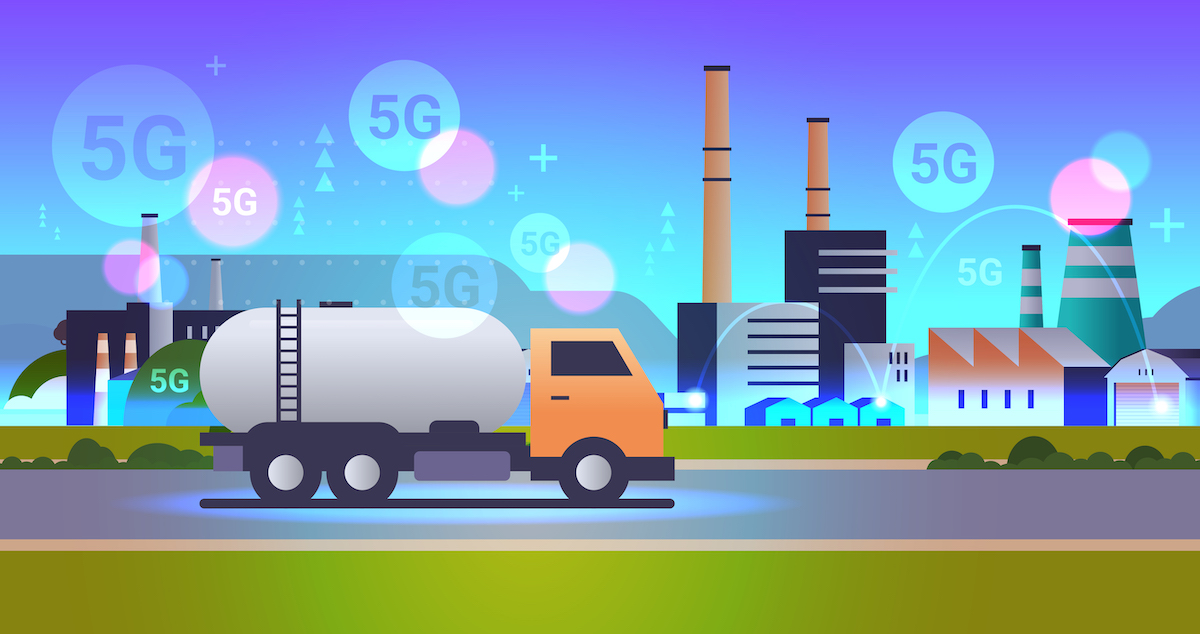5G in the manufacturing world
Manufacturing will be the sector that more than others will benefit from 5G, which will allow not only a reduction in production costs, reducing downtime, waste of resources and maintenance needs, but also new solutions that were previously technically and economically not possible.
The new 5G networks were not designed to replace 4G LTE (Long-Term Evolution) according to a pure generational logic, but rather to work together, adding capacity and functionality to improve cellular telephony but also to speed up data transfer, and this having a peak data rate at least 10 times higher than the current 4G LTE.
In the end, what can 5G coverage mean for the industry? In summary, realtime for wireless industrial sensors and asset tracking, with seamless communications. But also effective augmented and virtual reality, for predictive maintenance and real-time simulations. Finally, a real alternative to wired connections for the most demanding applications, such as vision and motion control. But there are design considerations to take into account: 5G operates in a less crowded frequency spectrum than classic WiFi, around 6 GHz, also using millimeter waves between 30 and 300 GHz, and at these frequencies the signals can be blocked by obstacles or absorbed by rain and humidity, which can be eliminated by installing small network cells. This detail is also very important as a differentiating element compared to 4G LTE networks, which require large “cell towers” to radiate signals over long distances, while 5G signals will be transmitted by a large number of small “cell stations” since the spectrum of millimeter waves that allows 5G to make high speeds available, can only travel over short distances, precisely because it is subject to both environmental and atmospheric interference. So, advantages and disadvantages. In this article, the considerations of the players in the world of automation.
Numerous advantages
The introduction of 5G is destined to rewrite the fate of the industrial world, even before the consumer one. There are so many advantages and opportunities ensured by constant low latency transmission that it is unthinkable not to speak of a real revolution, certainly a technological innovation with an enormous scope that will finally make it possible to fully realize the 4.0 vision. The advent of 5G will provide manufacturing companies with a reliable and secure network, which will be able to count on speeds and ping almost close to zero; remember that ping (Packet Internet Grouper) is a tool for measuring the data transmission delay of Internet connections, one of the indicators of the quality of Internet access. More about Connected Manufacturing: What it is and Why it is Important
5G is still evolving, it is undoubtedly one of those technologies that will be revolutionary in perspective, or rather “disruptive”, using more appropriate terminology, and the effects will be tangible in the field of Operation Technologies even more than in that of Information Technologies.
It must be reaffirmed that with the advent of this technology the industrial sector is carrying out its digital transformation. Indeed, the new communication standard will allow factories to become increasingly wireless, connecting machines, robots, controllers, sensors and other devices needed in an industrial environment. The 5G connectivity features, combined with computing capabilities, such as Machine Learning, Digital Twin, Extended Reality, Computer Vision and collaborative robots, will lead to unprecedented levels of performance and efficiency and will favor benefits such as flexible manufacturing and predictive maintenance. 5G therefore represents the enabling technology that will allow the implementation of the complete vision of industry 4.0
And cyber security?
5G is a constantly evolving technology built on the basis of the previous infrastructure, from which it will inevitably inherit vulnerabilities and misconfigurations. It will therefore be vital to resolve the protocol’s vulnerabilities to avoid large-scale exploitation of weaknesses, DDoS attacks and cyber attacks on IIoT components.
At the same time, it will be necessary to invest in the security of critical infrastructures, a sensitive area that requires an advanced level of protection, and to monitor the use of the new 5G technology in cyberwarfare.
About the Author
Antonio Conati Barbaro , COO, Alleantia. Looking to the ‘next big thing’, Internet of Things, since 2006, Antonio jumped at the Alleantia IIoT opportunity, joining founder Stefano Linari in the company launch and growth since 2011.
, COO, Alleantia. Looking to the ‘next big thing’, Internet of Things, since 2006, Antonio jumped at the Alleantia IIoT opportunity, joining founder Stefano Linari in the company launch and growth since 2011.



